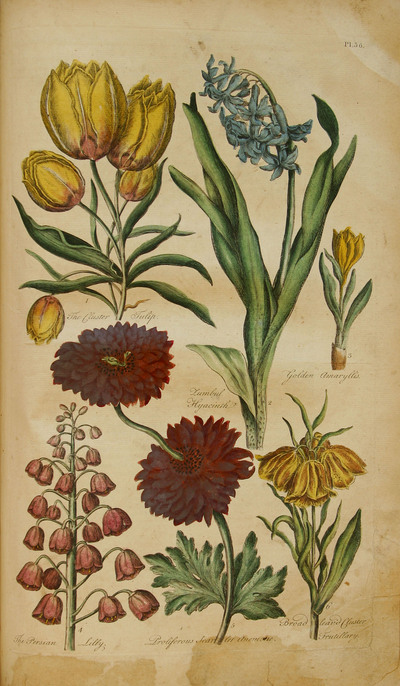
Colorized plate from a British gardening manual. 1757. More images here
The first newspapers appeared in the late 1400s in Germany, designed in the image of the brochures and pamphlets popular in Western Europe. Though vastly different both in utility and appearance than the newspapers of the modern era, these publications are the ancestors of dailies such as the Telegraph and Wall Street Journal. While largely successful in Europe, the introduction of the newspaper industry to the Americas proved to be a significant challenge. Because printing presses were expensive and difficult to build, they were extremely uncommon in the colonies and, for similar reasons, paper and ink were often difficult to obtain. Expediency, however, was the most elusive quantity. The colonies were rural and dispersed over a large portion of the Eastern Seaboard. The task of distributing newspapers to communities large enough to support a such a venture was nearly impossible. Moreover, the time required in setting the type and then delivering the products often meant that a newspaper might be delivered days or even weeks after news had already reached an area by word of mouth.
For these reasons, it was not until the beginning of the 18th century that printers in Boston, Baltimore, and New York began publishing news in installments. Even then publications schedules were irregular, the news was often out-of-date, and most publishers were constantly on the verge of poverty. Nevertheless, newspapers were supported by the political and intellectual elite and the industry managed to survive and even prosper.1 This promise of economic viability drew the attention of artisans and inventors who began searching for ways to improve the printing process.
Notes
- Tebbel, John. The Compact History of the American Newspaper (New York, NY: Hawthorn Books, 1969). Return to text ↑
